Reproduction is a sign of good health. Living organisms have a finite amount of resources available to them. These resources are then allocated to either survival and growth or to reproduction. For example, an animal needs food to survive. If they are barely able to obtain enough food to keep itself healthy, it would not produce very healthy offspring as there would not be enough resources to give to the developing offspring after the adult’s needs have been met. It is a sign of good health when animals are able to produce healthy offspring. It implies that not only do they receive enough resources to survive, they have enough left over afterward to reproduce.
Here at WonderLab we see a lot of reproduction in all of the communal groups of animals we have on site, suggesting that we are caring for these animals well enough that they can expend the energy to reproduce. Let’s take a look at some of the mating events that have occurred here!
One of the most intricate mating events that have occurred at Wonderlab is seen in our honey bee hive. The only individual in a honey bee hive that can reproduce is the queen. This reproductive strategy of only one mating female in a population is called eusociality. She is a special individual that leaves the hive after she is hatched to find drones (male honey bees) from other hives to inseminate her. After this initial flight, she hunkers down to begin her very own hive.
The queen determines the population dynamics of the hive. She chooses whether she lays male or female eggs because she can selectively fertilize the eggs as she lays them. If she fertilizes it, it will become a female worker or a new queen. If she does not fertilize it, it will become a male drone whose only job is mating with other queens. How do they make this queen? The workers will feed the special larvae that is to become a queen something called royal jelly. This is a special food filled with nutrients that will make this larvae develop into a queen. When she hatches she will leave the hive for her mating flight and to start her own hive.
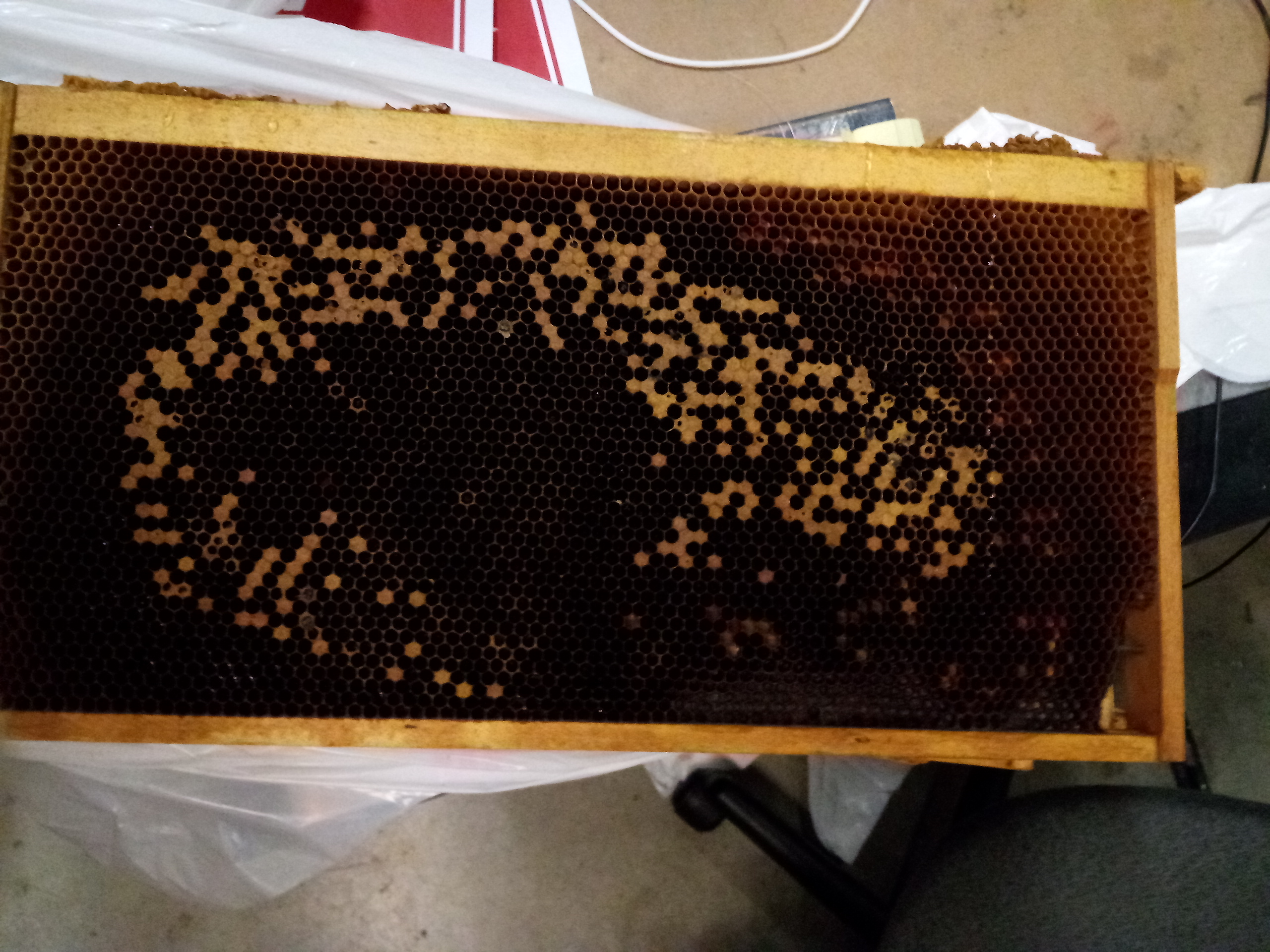
Image: An example of some brood combs taken from our most recent hive. The combs with the tan caps contain brood. Taken by Sam Couch
Big headed ants are similar to honey bees in that they also are eusocial having just one reproducing female in the colon, the queen. A queen is produced for a colony only once during mating season. Reproductive females and males are produced during mating season, and are the only ants in the colony to develop wings. Males are produced when the queen lays an unfertilized egg. This happens only during the breeding season. All of the other ants you see, minors, majors and super majors, are female and are produced from fertilized eggs. They fly from the colony to mate. When mating is over and the female is inseminated, the males die off, the females’ wings fall off and she finds a nice spot to begin her new colony. The queen collects all of what she will need to maintain her colony for the rest of her life. She needs only the one mating to be set for life. This is the only time that a queen can be made and is the only time that a colony can be made. If an existing queen dies, her colony will die out as well as this species of ants are unable to rear new queens and perform replacement. Queens always leave the colony for their mating flight, never to return.
Throughout her life the queen will lay fertilized eggs that will then grow into the minors, majors and supermajors. There are 4 stages an ant must go through before it becomes and adult big headed ant. They are laid as an egg. This egg hatches into a larva. The larva then experiences the biggest morphological changes when the larva spins a silk-like cocoon around itself, becoming pupae. They do not feed during this stage as they are spending all of their time metamorphosing into the adult shape they will take. Once they have fully developed, they emerge from their pupa in the adult form they will take.
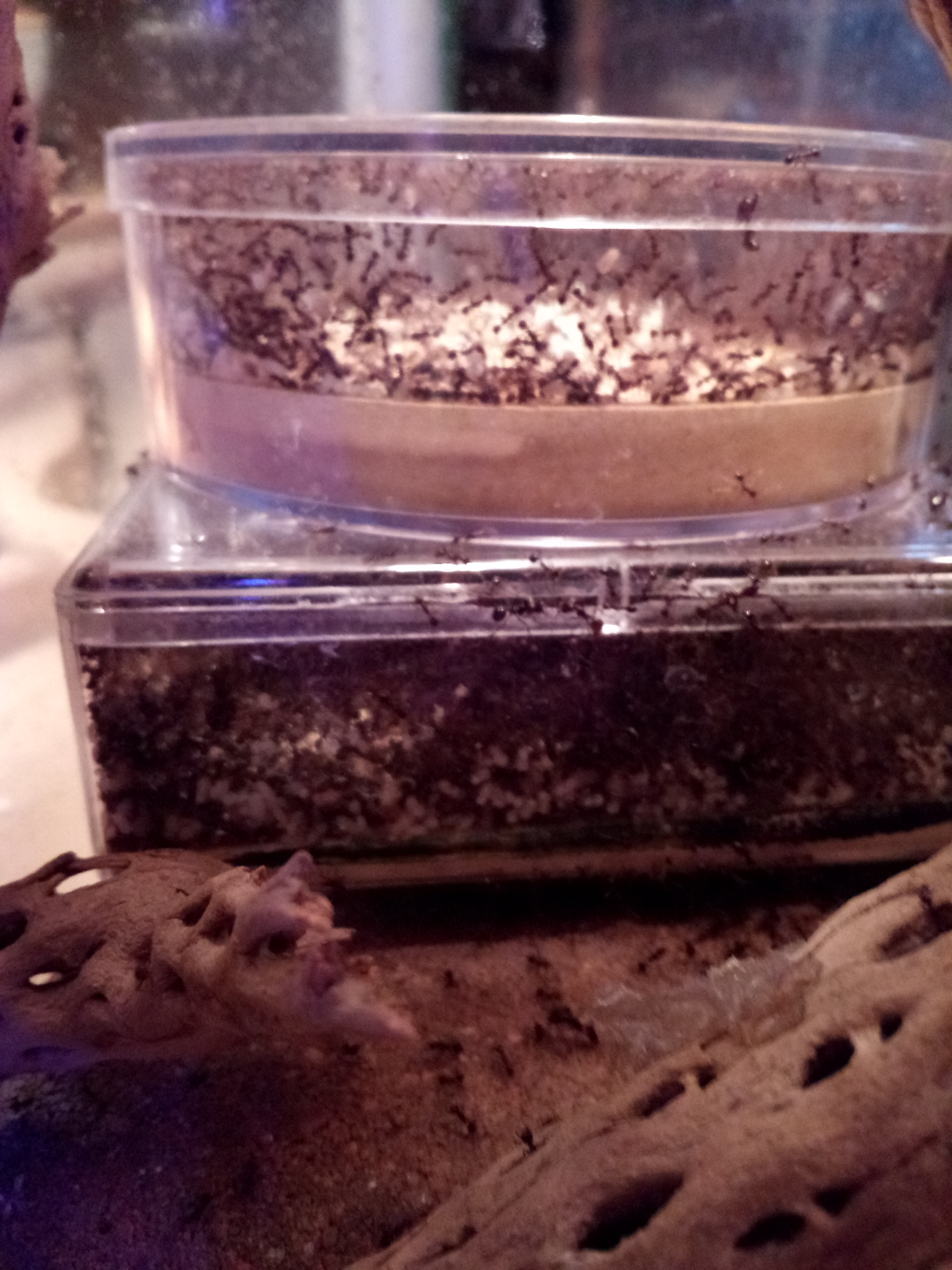
Side view of the main brood chambers in WonderLab’s Big Headed Ant exhibit. These two chamber contain almost all of the queen’s offspring, They will stay here until they mature into functioning ants. All of the white dots are eggs, larvae and pupae. Taken by Sam Couch
In addition to these two eusocial examples of arthropods we have also seen expansive reproduction in our Madagascar Hissing cockroaches. You can read more about their reproduction in another one of our blog posts WHEN COCKROACHES GO WILD: MADAGASCAR HISSER REPRODUCTION. We also have facilitated breeding in our Northern Walking sticks. You can learn about their reproduction in a video we took from some of our breeding adults Walking Stick Reproduction.
Coral are extremely good at reproducing because they can do it in many diverse ways. Not only can they reproduce sexually like the bees, ants and roaches, they also can do something called asexual reproduction, meaning they can reproduce exact clones of themselves, without ever needing any other corals. They can do this in many different ways but here we will talk about budding and its opposite, fragmentation, because these forms of reproduction have been seen in WonderLab’s aquarium.
Sexual reproduction is done differently in coral than it is in the arthropods because it involves something called external fertilization. This is when their gametes are released into the water and fertilization occurs in the open water. Since coral cannot get up and walk over to each other, it is really important that they time this release so that all of the corals are in sync. This increases the likelihood of gametes finding each other. How do the corals know when to do this? They know it is breeding season when they sense certain environmental cues such as average temperature, length of day, or the rate of temperature changes through out the day. They know when the moment comes for them all to spawn because the lunar cycle during their breeding season tells them to. Once the gametes are fertilized they are called a planula larvae, meaning they are a larvae that swim through the water. This larvae floats in the water column until a spot with conditions suitable for coral life is found. This comes in the form of a stable, hard surface found in warm, clear, shallow water. Once the larvae finds these conditions, it settles down and starts to accrete its skeleton Coral skeleton growth.
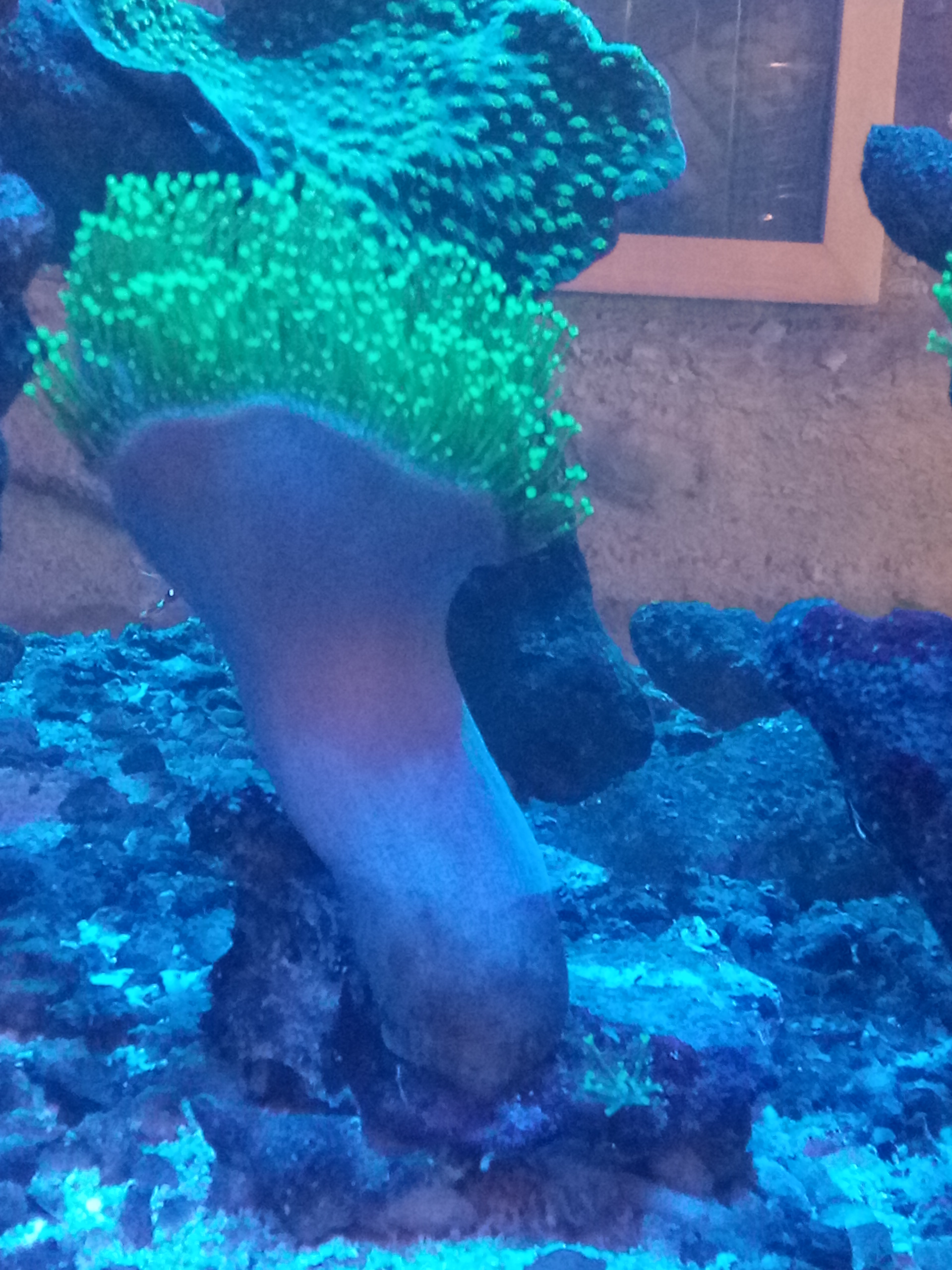
Image : This image shows a young Sarcophyton polyp accreted immediately next to a mature Sarcophyton as a result of sexual reproduction here in WonderLab’s coral reef aquarium. Image taken by Sam Couch.
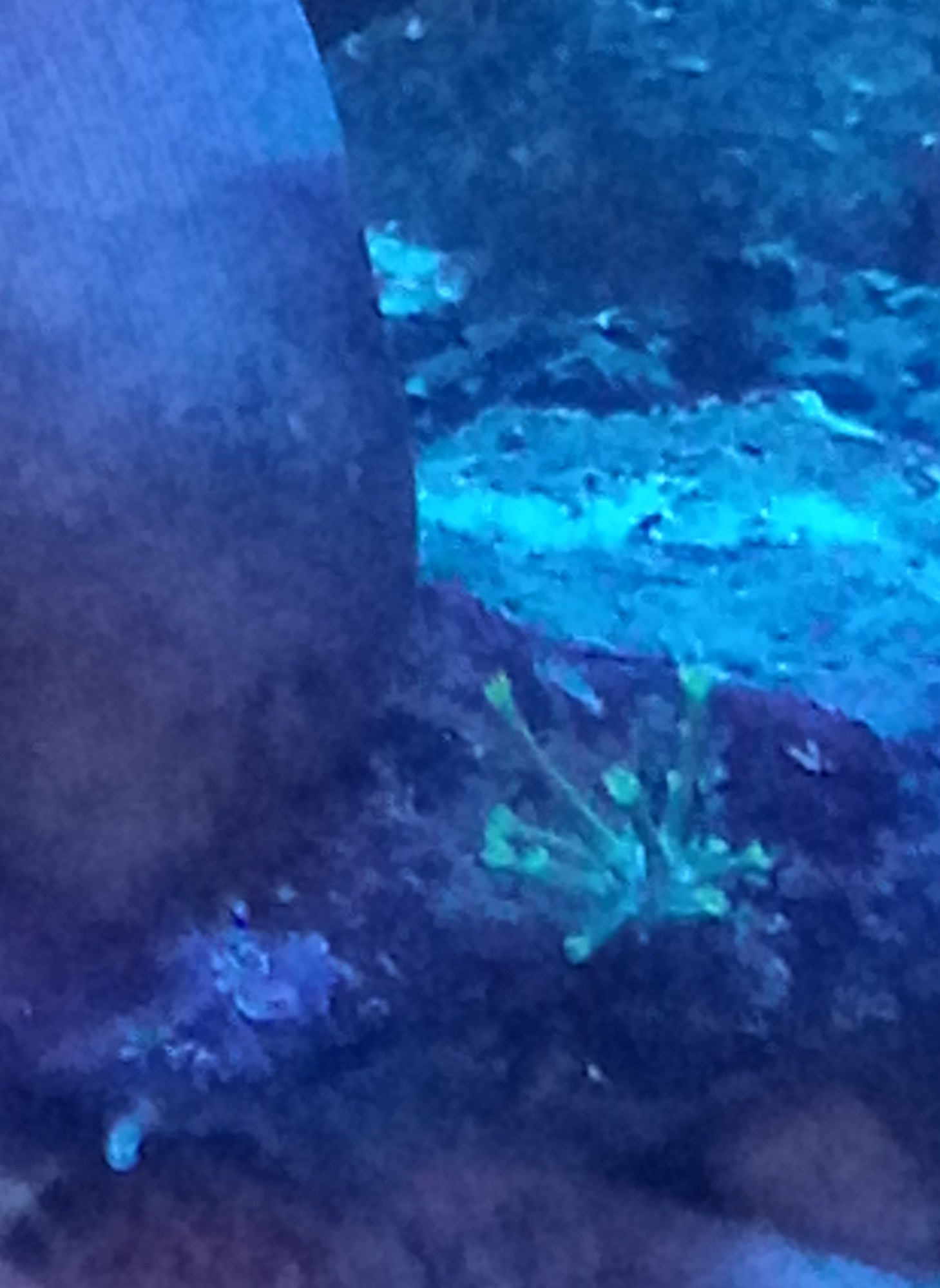
Image: This image is a close up view of the young polyp from image. This image was taken in WonderLab’s coral reef aquarium by Sam Couch.
One trait that contributes to coral resilience is the fact that they can also reproduce asexually, without assistance from another coral. Even if a coral is all by itself, it can still reproduce more of its own species, thus keeping the population thriving. One way they can do this is through a process called budding. This is when a piece of coral grows off a parent polyp and then falls off via a process called fission. This is when the bud undergoes cellular division to break off. This piece then moves through the currents until it finds a suitable place to land and accrete its skeleton.
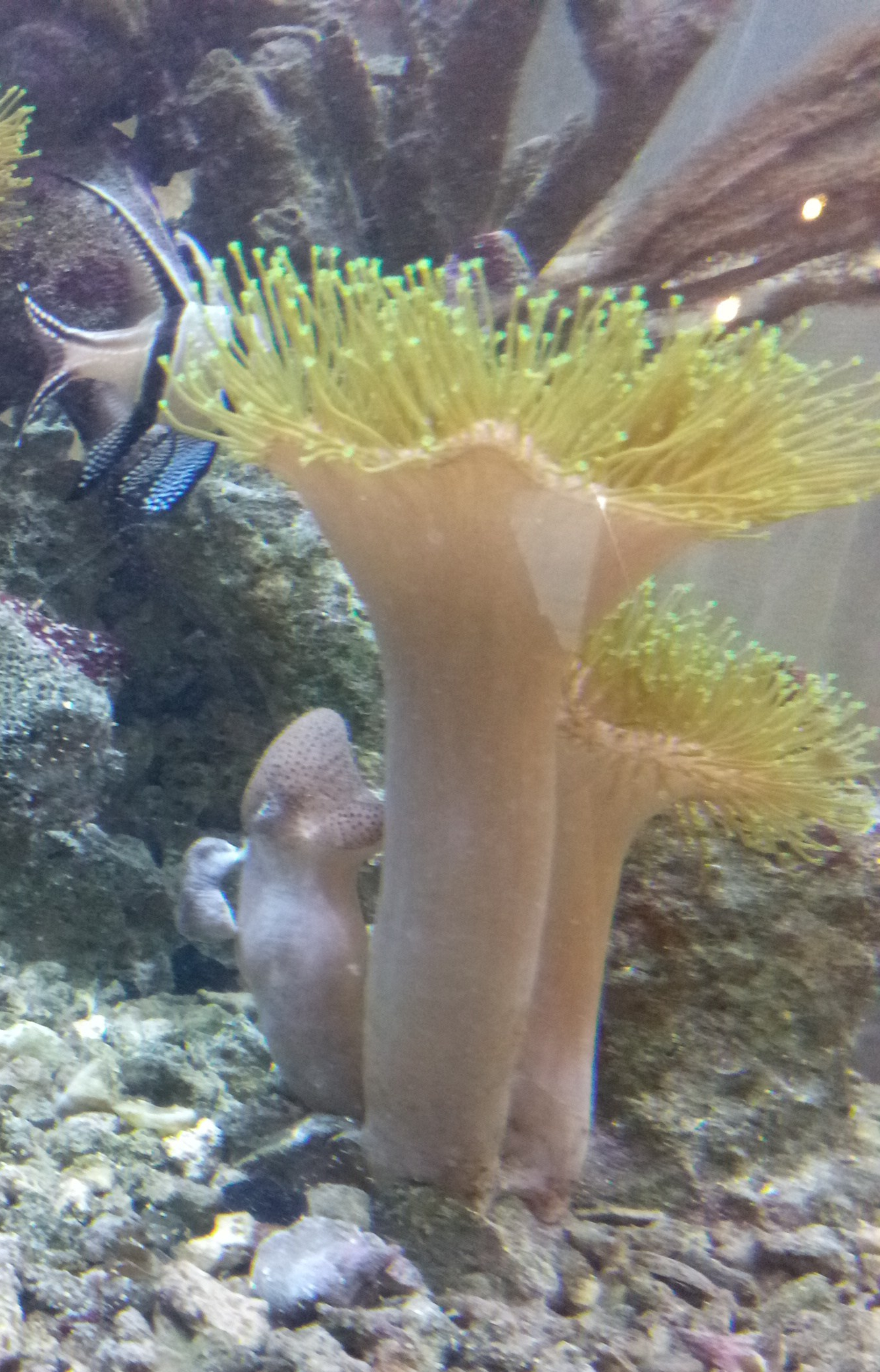
Image: This is an example of budding in a Sarcophyton here in WonderLab’s coral reef aquarium. You can see this in the far left individual as compared to two non-reproducing Sarcophytons. Image taken by Sam Couch.
Not only are our corals thriving, we even have had some spawning in our Cardinal fish. This link shows a video showing our cardinal fish in the midst of their mating ritual and explaining how they do it. Unfortunately, the eggs did not come to fruition as our male ate them after about a week. This is a sign that he did not get enough food prior to mating. He got enough to last the week but he got a little hungry! Next time we plan to target feed the male as woon as we start to see mating behaviors in the female.
As you can see here, the animal kingdom has evolved very diverse methods of propagating life, each being successful in its own way. All of these processes have been seen in action here at WonderLab and it is truly an awe- inspiring experience being able to see life being created every day. Enjoy!
SAM COUCH Writing to you here. I am the animal exhibits manager at WonderLab Museum of Science, Health and Technology. I found my way here from Indiana University where I got a B.S in Biology and a certificate in animal behavior with a concentration of marine science. There are many reasons I love my job but one of the biggest reasons is that every day I come to work I get to actively watch as life finds a way. There is something new to see every day and that makes every day an adventure!

Leave A Comment